Two weeks have elapse since the eagerly awaited results of the J&K state assembly elections were announced on December 23, 2014. It is a bit surprising, indeed disappointing, that the main political parties have still not managed to clearly understand the nature of the mandate and work out an arrangement under which a stable representative government could be provided as per the aspirations of the larger section of the electorate.
The lections have thrown up a fractured verdict with Mufti Mohammed Sayeed led Peoples’ Democratic Party (PDP) emerging as the single largest party (28 seats) followed closely by the Bhartiya Janta Party (BJP) with 25. The other main players namely the ruling National Conference got 15 seats, the Congress Party 12 and 7 seats went to ‘Others’ that included 2 seats to the JKPC of Sajjad Lone.
To complete the statistical details of the elections, one must acknowledge that the average voter turn out of around 65% was at an unprecedented high for the state and compared favorably with 61.4% in 2008 and 43.09% in the 2002 elections to the state assembly. It is also worth mention here that in over all terms, the BJP received the highest vote share of 23% (32.4% in the Parliamentary Elections) followed by PDP-22.7% (20.5%), NC-20.8 % ( 11.1%) and the Congress Party bringing up the rear with 18% (22.9%). An examination of the election statistics also brings out the fact that the Jammu region, as expected, strongly backed the BJP while South and North Kashmir largely pitched for the PDP which, despite heavy anti-incumbency, could not wipe out the NC and the Congress.
One can continue playing around with the statistics generated during the election to come to varying conclusions. But that’s not what we intend doing in this paper. The main point we would like to stress here is that the electorate has reiterated their overwhelming faith in the democratic process in the state, there by, unequivocally rejecting the ‘separatists’ agenda. The people of the state not only braved the inclement weather in the valley; the after effects of the devastating flood and also the boycott call issued by the separatists. And while doing so they gave a verdict that is fractured. The questions are whether the verdict is indecisive or was the voter confused? The mere fact that the final result is one of a ‘hung assembly’ does not establish that voter was either indecisive or confused. They did vote conclusively for a change from the discredited NC-Congress rule. The voter in Jammu region and to an extent even in the Valley showed a clear preference for political parties that pitched for peace and development as their main platforms during the course of their campaign. Understandably, the BJP and the PDP were identified by the electorate as the main proponents of this line. Rejection of militancy and the agenda of the separatists were the other key messages that came out of the electoral verdict.
As is well known, the State has three distinct regions; the Valley which is largely Muslim; Jammu which is largely Hindu majority and Ladakh which is inhabited largely by Buddhist. Together they form the totality of the state and are a part of the Indian whole. The people of Jammu largely voted for BJP and of the Kashmir Valley for the PDP since they were perceived as the main proponents of the peace and development agenda. It must, however, be added that the PDP, which eventually emerged as the single largest party with 28 seats, could not fully exploit these sentiments and must be hugely disappointed with their final tally. As the largest single party the PDP is justified in their assessment that the people have reposed confidence in it. In Jammu, as the largest single party, the second largest in the state overall, having polled more votes than the others, the BJP has clearly established their claim to participate in the government. The natural fallout of the elections should, therefore, be for the PDP be the lead party in a coalition in which the BJP participates almost as an equal partner. If this is accepted by the two main parties, power sharing arrangements can be worked out under which all the three regions of the State would get representation in government in terms of a common minimum programme. This alone would fulfill the aspirations of the people.
For a democracy to function it has to ensure that every citizen feels that he is a participant in government and that government will function for the benefit of the people. The people of Kashmir have this right because it is through the democratic process that they will be able to determine how they will be governed. This also gives us a golden chance of weaning away the extremist and separatist groups from their stated objective of breaking away from India by convincing them that they are an integral part of this country with all the rights of an Indian citizen. The test of whether this is the direction in which we are moving is the formation of the new government in Jammu & Kashmir that truly represents the wishes and aspirations of the people.
Surprisingly, media reports suggest that other permutations and combinations are also being examined as possible options. These include a BJP-NC coalition or an NC-Congress-Others coalition or even a PDP-NC combination. BJP must steer clear of both parties because therein lies its true vocation and salvation. There is even some speculative talk of BJP and ‘Others’ trying to form a ‘minority’ government that does not survive a vote of confidence so that President’s rule could be proclaimed. These would be disastrous. Congress and the NC have been ‘rejected’ at the polls and any attempt on their part to gain a back-door entry would amount to negation of the popular sentiments. Both these parties are lost in a quagmire created by bad government and corruption.
On the other hand, any contrived attempt to eventually impose President’s Rule would be nothing less than the basic democratic principle. A bout of President’s rule at this stage would completely destroy any harmony that New Delhi aspires to create with the people of the Kashmir Valley. It should, in fact, try and form a coalition with PDP because the people of Kashmir have clearly indicated that they want Mufti Mohamed Sayed as Chief Minister. BJP should very graciously accept the leadership of PDP whilst having a strong representation in the Cabinet. Thereafter, the coalition must forget all distinctions between the three regions of Jammu & Kashmir and must provide an evenhanded, development oriented government to the entire State. It must be noted here that J&K is the only Muslim majority state in the Union and PDP-BJP coalition at this juncture would further reinforce India’s total commitment to its secular credentials.
There is a precedent to the current Jammu & Kashmir scenario. In pre-partition Punjab, neither Congress nor the Muslim League formed the government. It was Sir Sikander Hyat’s Unionist Party which ruled. There was an agreed formula of Cabinet seat sharing between Muslims, Hindus, Sikhs, Christians and others and it worked till 1947. Jammu and Kashmir can have a similar arrangement. Incidentally, the people of Jammu & Kashmir need not feel that unless they are given some sort of special status under Article 370 which virtually reduces the Centre to a cipher they cannot be a part of India. This, in our view, is not a valid debate at this critical hour in the democratic history of the state.
In the present scenario, one is tempted to recall that the first truly free, fair and participative election to the Jammu & Kashmir Assembly was held in 2002 when Shri Atal Bihari Vajpayee was the Prime Minister. Every Kashmiri acknowledges that election as most fair and was a firm and befitting answer to the rise of militancy and violent separatism. Till then the Kashmiris felt that India would never give them a fair deal or a sense of participative democracy by manipulating election results. The present government, by once again holding impartial elections, has been able to restore the faith of the Kashmiris in the democratic process. It is to the great credit of the Election Commission that it was able to overcome all handicaps to organize credible elections. It is even greater credit to the people of Jammu & Kashmir who defied the militants and inclement weather in the Valley to come out in very large numbers to vote. This is actually a rejection of the separatists and if the momentum is sustained the separatists will become irrelevant and Pakistan will have about a snowball’s chance in hell of making Kashmir break away from India. This is a very positive development. This is also a golden opportunity offered to the nation by the people of Jammu & Kashmir which would virtually eliminate Pakistan as player in Kashmir.
In the light of the above analysis, it should be incumbent on the two major parties namely the PDP and the BJP to accept and honour the peoples mandate as one in favour of peace and development by coming together with a common minimum programme and expeditiously form the next government in the state. Failure to do so, as mentioned earlier, would only be exploited by forces that back the ‘separatist elements in the state and are backed to the hilt by our adversaries from across the borders. It amy be noted here that these elements have already started seeking an opportunity for themselves in the midst of the existing state of confusion. Some separatist leaders are reported to have met PDP functionaries to sow seeds of doubt. Syed Ali Shah Geelani has even gone public with the threat of launching a mass movement against any role in governance for the so called ‘fascist’ forces! Let politics not throw this opportunity away in pursuance of narrow political agenda and instead, show statesmanship to remove the last barriers to the psychological and spiritual assimilation of the State of Jammu & Kashmir.
Published Date: 9th January 2015, Image Source:http://journal.georgetown.edu

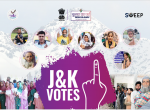
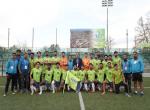
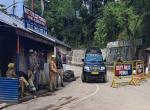
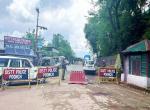
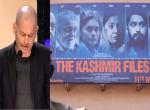
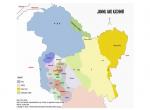
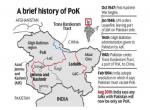
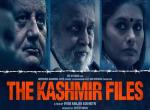
Post new comment